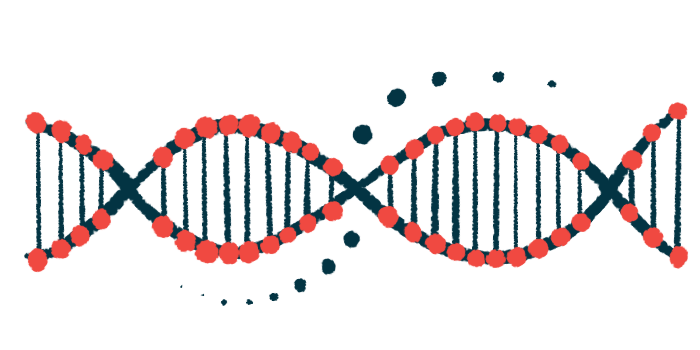Huntington’s: Huntingtin protein function loss plays key role
Study finds early changes largely due to absence of normal protein
Written by |

Early molecular changes in Huntington’s disease appear to be largely due to the loss of normal huntingtin protein function, not just the harmful effects of its mutated form, a new study reports.
The scientists found that during nerve cell development, cells without huntingtin showed similar molecular-level disruptions as those with the mutated version. That suggests, according to the researchers, that the absence of the normal protein plays a major role in early disease development.
“These findings indicate that increased expression of genes in [Huntington’s neural stem cells] was mainly a direct or indirect result of a deficiency of [unmutated huntingtin] in the cellular regulatory network,” the team wrote.
Better understanding the mechanisms by which this dysregulation occurs may help identify targets for future Huntington’s treatments, the researchers noted.
The study, “HTT loss-of-function contributes to RNA deregulation in developing Huntington’s disease neurons,” was published in the journal Cell & Bioscience.
A neurodegenerative disorder, Huntington’s is caused by mutations in the HTT gene, which provides instructions for making the huntingtin protein. The mutated protein has an abnormal shape, and tends to form clumps in the brain, leading to nerve cell damage and symptoms such as involuntary movements and behavioral changes.
“Despite [Huntington’s] manifesting at a mean age of 40 years … it has begun to be recognized as a neurodevelopmental disorder,” the research team wrote. This means that problems in the early stages of neuronal development may contribute to later nerve cell damage and resulting symptoms.
Huntington’s is often explained as being caused by the harmful effects of the mutated huntingtin protein (gain of function). But the disease may also be linked to a lack of normal huntingtin (loss of function), which is needed for healthy cell function. Although this idea gets less attention, scientists believe that both the toxic effects of the mutated protein and the loss of the normal one likely play a role in how the disease develops.
Understanding both the loss and gain of huntingtin function
Now, seeking to understand how both loss and gain of huntingtin function affect brain cells, the researchers compared different types of human stem cells. Some had normal huntingtin (controls), one had the mutated version found in Huntington’s, and one had no huntingtin at all (HTT knockout). This helped the team see which changes were caused by the harmful effects of the mutation, and which were due to the lack of the normal protein.
By exposing these stem cells to specific conditions, the researchers developed them into neural stem cells (NSCs), which give rise to different types of neurons. Then, the team developed the NSCs into cells similar to medium spiny neurons (MSNs). MSNs are particularly vulnerable to the impacts of Huntington’s.
Differences were found in MSN shape and gene activity in Huntington’s and knockout cells compared with control cells. Several of these differences appeared in both Huntington’s and knockout cells, indicating a likely loss of function explanation.
Proteins called transcription factors affect the activity of genes by binding to sequences of DNA, turning genes on or off. The team found significant increases in levels of seven transcription factors for both Huntington’s and knockout cells compared to control cells.
“The substantial increase in the expression levels of the [transcription factors] validated in our study … is consistent with reported changes observed in … the brain tissue of [Huntington’s] patients,” the researchers wrote.
This work demonstrated that decreased levels of the transcription factors were at least partially related to a lack of functional huntingtin. Adding an unmutated version of HTT to knockout cells to increase normal huntingtin reduced most transcription factors levels by about 40% to 60%, the data showed. While a mutated version of HTT also decreased the levels of these transcription factors to some extent, it was less effective.
Loss of normal huntingtin may cause feedback loop disruptions
Another type of molecule, called microRNA (miRNA), can also have an indirect impact on the levels of transcription factors. Several types of miRNA were significantly different between the cell types, the data showed.
When the researchers added one type of miRNA, called miR-9, to Huntington’s cells, expression of all elevated transcription factors decreased by about 35% to 80%.
These findings suggest that, in Huntington’s, the loss of normal huntingtin can disrupt a feedback loop that helps control gene activity. Lower levels of normal huntingtin reduce miR-9, which allows certain gene regulators to rise. This, in turn, can further disturb HTT gene activity, making the shortage of normal huntingtin even worse.
It can be hypothesized that the already limited function of [unmutated huntingtin] … becomes more limited in the presence of [mutated huntingtin].
Both the harmful effects of the mutated huntingtin protein and the loss of normal huntingtin function likely contribute to the disease, and may even influence each other, according to the researchers.
“It can be hypothesized that the already limited function of [unmutated huntingtin] … becomes more limited in the presence of [mutated huntingtin],” the scientists wrote.
These findings might have implications for developing Huntington’s treatments, per the team. Certain experimental gene therapies aim to decrease expression of both mutated and unmutated huntingtin. However, if loss of function plays a role in the disease, therapies that only act on the mutated version of the protein may be more effective and safer, the researchers hypothesized.







